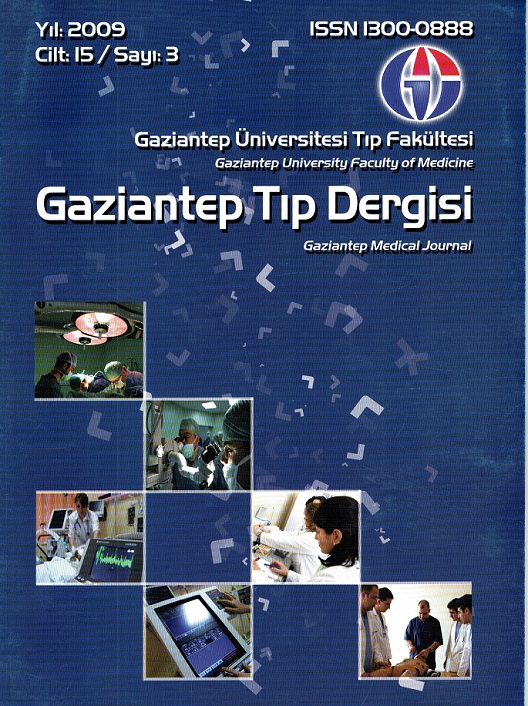Is There Any Association Between Serum Iron And Copper Levels In Hemodialysis Patients?
DOI:
https://doi.org/10.58600/eurjther.2009-15-3-1321-archKeywords:
Hemodialysis, Iron, Ferritin, CopperAbstract
The aim of the present study was to determine changing in serum iron (Fe), copper (Cu) and ferritin levels in hemodialysis patients and to indicate whether there were any correlations between elements and ferritin levels. The study was carried out on 47 hemodialysis patient with the mean age 50.26±16.36 yr who were dialyzed with a range of 2-16 years. This group called as "Hemodialysis group". Blood samples were taken before (pre-hemodialysis) and after (post-hemodialysis) the hemodialysis session. "Control group" included 23 healthy volunteers with the mean age 39.52±11.54 yr. The findings demonstrated that there were no significant differences between the all groups according to data of serum Fe levels. However, serum Cu levels were higher in pre-hemodialysis than the control group (p<0.05) and serum ferritin levels were higher in group pre and post-hemodialysis than the control group (p<0.001). In pre-hemodialysis a significant positive correlations between ferritin and Fe (r=0.373, p<0.05), Fe and Cu (r=0.410, p<0.01) were determined. Findings obtained from the study deliberate that alterations in the levels of Cu may be important for the hemodialysis patients. In addition to correlation between Fe and Cu suggests that there is association between these elements. Further studies are necessary to clarify the association between Fe and Cu.
Metrics
References
Vanholder R, Cornelis R, Dhondt A, Lameire N. The role of trace elements in uraemic toxicity. Nephrol Dial Transplant. 2002;17(2):2-8.
Kazi TG, Jalbani N, Kazi N, Jamali MK, Arain MB, Afridi HI, et al. Evaluation of Toxic Metals in Blood and Urine Samples of Chronic Renal Failure Patients, before and after Dialysis. Renal Failure. 2008;30:737-745.
Hsu WA, Lee KC, Lin SL, Lee SH, Hsieh SJ, Kan YT. Clinical manifestations of trace metal abnormality in hemodialysis patients: A multicenter collaborative. Dial & Trans. 1997;26:15-16.
Zima T, Tesar V, Mestek O, Nemecek K. Trace elements in end-stage renal disease. Blood Purif. 1999;17:187- 198.
Enders HM. Evaluating iron status in hemodialysis patients. Nephrol Nurs J. 2002;29(4):366-370.
Kalantar-Zadeh K, McAllister CJ, Lehn RS, Liu E, Kopple JD. A low serum iron level is a predictor of poor outcome in hemodialysis patients. Am J Kidney Dis. 2004;43(4):671- 684.
Kirschbaum B. Relationships between the copper and iron systems in hemodialysis patients and variables affecting these systems. Biol Trace Elem Res. 2000;77(1):13-24.
Zima T, Mestek O, Nemecek K, Bartova V. Trace elements in hemodialysis and continuous ambulatory peritoneal dialysis patients. Blood Purif. 1998;16:253- 260.
Locsey L, Papp L. Study of trace elements in patients on haemodialysis. Int Urol Nephrol. 1983;15(3):289-95.
D'Haese PC, Couttenye MM, Lamberts LV, Elseviers MM, Goodman WG, Schrooten I et al. Aluminum, iron, lead, cadmium, copper, zinc, chromium, magnesium, stronsium, and calcium content in bone of end-stage renal failure patients. Clin Chem. 1999;45:1548-1556.
Lin TH, Chen JG, Liaw JM, Juang JG. Trace elements and lipid peroxdation in uremic patients on hemodialysis. Biol Trace Elem Res. 1996;51:277-283.
Krachler M, Scharfetter H, Wirnsbereger GH. Kinetics of the metal cations magnesium, calcium, copper, zinc, stronsium, barium and lead in chronic hemodialysis patients. Clin Nephrol. 2000;54:35-44.
Menevşe E, Sivrikaya A, Karagözoğlu E, Tiftik AM, Türk S. Study of elements, antioxidants and lipid peroxidation in hemodialysis patients. Turk J Med Sci. 2006;36(5):279-284.
Foret JP. Diagnosing and treating anemia and iron deficiency in hemodialysis patients. Nephrol Nurs J. 2002;29(3):292-296.
Santoro A, Canova C. Anemia and erythropoietin treatment in chronic kidney diseases. Minerva Urol Nefrol. 2005;57(1):23-31.
Downloads
Published
How to Cite
Issue
Section
License
Copyright (c) 2023 European Journal of Therapeutics

This work is licensed under a Creative Commons Attribution-NonCommercial 4.0 International License.
The content of this journal is licensed under a Creative Commons Attribution-NonCommercial 4.0 International License.


















